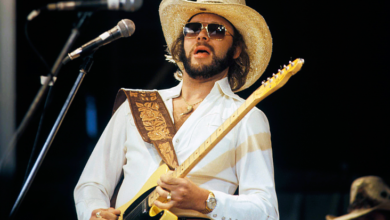The Future of Live Music: Virtual Bands and Hologram Performances Redefining the Stage

The music industry is evolving rapidly, embracing technology to create new and immersive experiences for audiences worldwide. Virtual bands and hologram performances are at the forefront of this revolution, challenging traditional notions of live music while offering fresh possibilities for artists and fans. As digital innovation continues to reshape the entertainment landscape, the question arises: are virtual performances the future of live music?
The Rise of Virtual Bands
Virtual bands are musical groups where animated or digital characters represent the performers. One of the most famous examples is Gorillaz, a virtual band created by musician Damon Albarn and artist Jamie Hewlett. Unlike traditional artists, virtual bands have no physical limitations, allowing for boundless creativity in music videos, live shows, and collaborations.
Advancements in motion capture technology and real-time animation software have made it possible for virtual artists to perform on stage alongside real musicians. The rise of VTubers (virtual YouTubers) and digital idols, particularly in Japan and Korea, has further popularized this trend. These digital performers engage with fans through live streams, social media, and even full-fledged concerts, demonstrating the viability of virtual music acts.
Hologram Performances: Reviving Music Legends
Hologram technology has taken virtual performances further by bringing deceased artists back to life on stage. The most famous example is the Tupac Shakur hologram at Coachella 2012, which stunned audiences by making the late rapper appear alongside actual performers. Since then, hologram concerts featuring Whitney Houston, Roy Orbison, and Maria Callas have been produced, allowing fans to experience the magic of their favorite artists again.
A groundbreaking example of holographic performances is the ABBA Voyage concert in London. Using motion capture and CGI, the legendary band appears as digital avatars, performing alongside a live band in a custom-built arena. This fusion of nostalgia and cutting-edge technology has set a new standard for the future of live entertainment.
How the Technology Works
The success of virtual bands and hologram performances relies on several key technologies:
- Motion Capture: Capturing real musicians’ movements and expressions to animate digital avatars in real time.
- 3D Projection & Holography: Using advanced projection systems to create life-like holograms that can interact with live performers and audiences.
- Artificial Intelligence (AI): Enhancing virtual artists’ ability to respond dynamically to audience engagement.
- Augmented Reality (AR) & Virtual Reality (VR): Offering fully immersive concert experiences where fans can attend performances from anywhere in the world.
The Future of Live Music
As technology continues to evolve, virtual bands and hologram performances are becoming more sophisticated and widely accepted. However, they also raise questions about authenticity and the essence of live music. Some purists argue that nothing can replace the raw energy and spontaneity of a real artist on stage, while others believe that digital performances offer new ways to experience music.
With major artists and production companies investing in virtual entertainment, it is clear that these innovations are not just a passing trend. Whether as a supplement to traditional concerts or a new form of artistic expression, virtual bands, and holograms redefine what it means to experience live music.
As we step into the future, one thing is sure: the stage is no longer limited by physical presence, and the possibilities for musical performances are endless.



